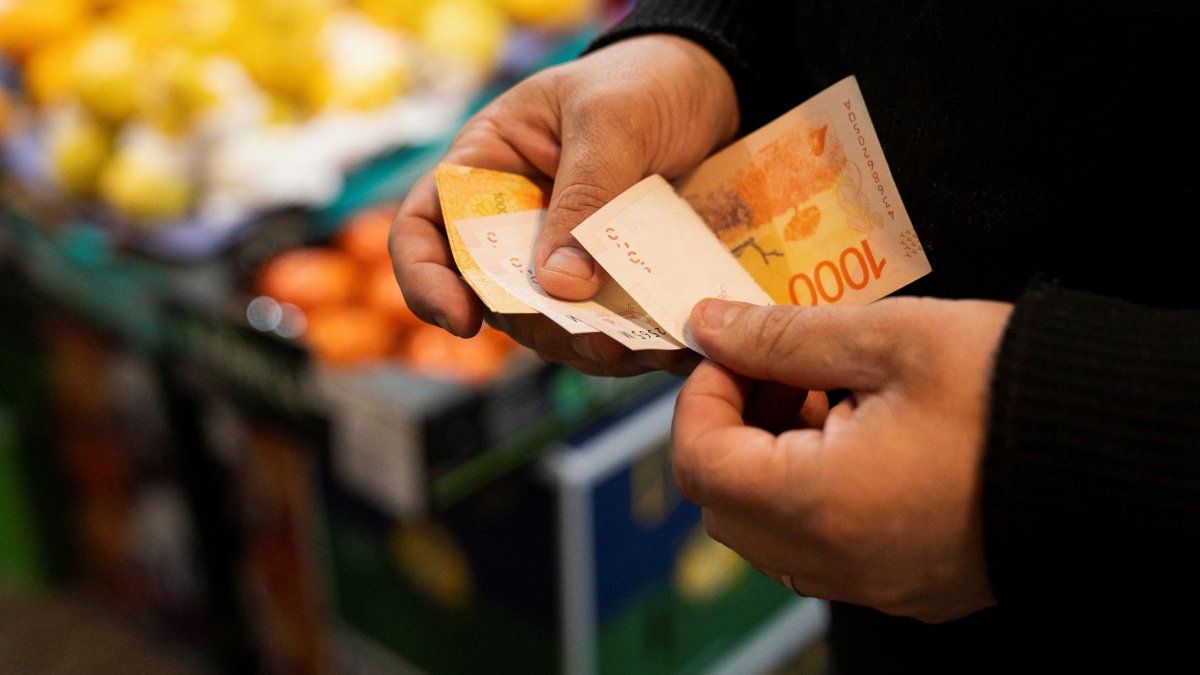The core inflation figure has been the same for two months. After the drop from April to May –6.3% to 3.7%-, the data was repeated in June. The Central Bank of the Argentine Republic (BCRA) assured in Wall Street that in July luck will change and the data will be close to 3%, in line with the decline in the general CPIIs this projection compatible with achieving the 2% target?
Prior to this stage, the Government began a marked process of decelerating inflation, after reaching 25.5% and 28.3% of core CPIThe document highlights that the decline in the speed of prices was due to a fiscal adjustment policy, exchange rate, exchange rate anchor and interest rate cutstaking it into negative territory.
According to the latest data from INDEC, not only the downward trend in inflation was interrupted when it went from 4.2% to 4.6%but Core CPI reaches 3.7% for the second consecutive month.
Werning held in front of Wall Street Investorsthat this last indicator -which excludes seasonal and regulated items from the measurement- will fall to 3.2% in July and general inflation to 3.7%.
What is not explicit in the report is the new condition that President Javier Milei understands as exclusive for eliminating exchange restrictions: convergence of the inflation and devaluation rates to levels close to 0%.
“Once we reach inflation around 2% per month, we will go for an inflation rate of 1% per month, and when inflation has disappeared, when it is at levels close to zerothere we will have to choose whether we go to a zero devaluation scheme. That is, it would be a fixed exchange rate or we let it float,” the president explained days ago in his speech at the Stock Exchange.
The estimate that Werning presented to the private sector for July responds to the disinflation policies that the Government highlights, but also to the postponement of energy tariffs -light and gas-, Partial increase in fuel tax and the Freezing of bus fares in the AMBA.
This situation raises questions about the sustainability of the path that has reduced inflation since December, which was interrupted in June.
“It is a good sign that it can go below 4%”says the head of the EPyCA consultancy, Martin Kalos. However, he understands that the process “tends to plateau”, a product of several factors.
First, the economist points to inflationary inertia as a key obstacle, since Argentina has been under a regime of high inflation for two years.This means that people’s and companies’ behaviors adapted to these high inflation numbers, updating contracts and prices more frequently.“, explains Kalos.
At the same time, exchange rate uncertainty is based on inflationary inertia, making the outlook more complex.There is no clarity in the Government’s exchange rate policythere are measures to try to contain the gap but there is no medium and long-term view,” warns the economist and understands that these doubts “have an impact on the rise of the dollar, reflected in prices.”
In parallel, the postponement of increases in public service rates threatens the correction of relative prices and the Update of salaries, pensions and social plans appears as outstanding debt to reactivate consumption in a generalized and sustained manner.
Augustin D’Attellisformer director of the BCRA, assures that the CPI for May “It was a flat”, while in July “We are going to see a higher indicator” because “High frequency data reflects almost 4% in food and other measurementsAt the same time, the government believes that it will not be able to withstand the devaluation pressure of the market and will be forced to make an adjustment to the exchange rate.
The official of the previous administration considers that “The underlying problem of the economy is the lack of dollars“and that could make the intervention in the gap have an effect in the short term, but the underlying trend”will remain the same”, with the risk of being passed on to prices.
In any case, Werning acknowledges in the document that there are relative prices that deserve a second correction, but he focuses the expectations of disinflation in the second stage, on monetary policy.
Is the Government betting on economic recovery? According to the document, The strategy relies on the private sector and increased demand for credita product of the inflationary slowdown. The idea is to remonetize the economy with a monetary base equivalent to 9% of GDP.
In that sense, Kevin Castilloan economist at the OPEN observatory, points out that the latest announcements regarding monetary policy are aimed at “pulverizing” inflation, but at the same time “They are an anchor of magnitude for the activity“It is difficult to imagine a scenario in which inflation falls and there is economic recovery at the same time,” the specialist analyses.
Source: Ambito




